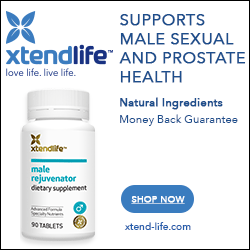Pop-Tarts Are Better Than Brownies???
The New York City Dept. of Education apparently thinks so. According to the NYT:
By the time the Panel for Educational Policy was ready to vote on bake sales during its monthly meeting on Wednesday night, it was after 11:30. By then, just one mother, Elizabeth Puccini, was waiting to speak out against the new policy, which bans most bake sales but allows students to sell premade items including Pop-Tarts and Doritos.
Apparently this was done to… combat childhood obesity.
No homemade or unpackaged items are on the list of “approved” foods because “it’s impossible to know what the content is, or what the portion size is,” said Kathleen Grimm, the deputy chancellor for infrastructure and portfolio planning, who oversees the regulation.
…The criteria led some foods not normally thought of as healthy to make the list. For example, approved items include two of the 21 varieties of Frito-Lay Doritos: Cool Ranch Reduced Fat, and Spicy Sweet Chili (1 ounce packages).
The city has also green-lighted one of 29 types of Kellogg’s Pop-Tarts, the Frosted Brown Sugar Cinnamon (1.76 ounces)… Other highlights from the list: Nutri-Grain Cereal Bars (blackberry only); Linden’s Cookies (butter crunch, chocolate chip or fudge chip cookies in two cookie packs); and Nature Valley Crunchy Granola Bars (just the Peanut Butter and Oats ‘N’ Honey varieties).
On the face of it, it seems like a dumb move. Although the point is to limit the number of calories in a serving of food, there’s nothing to stop kids from buying (and eating) multiple packs. Not to mention that the schools are – in effect – subsidizing manufacturers of snack/junk food.
You’re going to have to work hard to convince me that PopTarts or Fritos are somehow “better” than – say – carrot cake or banana bread. Would it really be so hard to encourage parents/families to contribute somewhat healthier items to bake sales? Is it so impossible to divvy homemade items into smaller portions? Seems to me that it would have been better to work with the parents on sensible guidelines for bake sale contributions, vs. banning homemade foods outright.




February 28, 2010
Pop-Tarts Are Better Than Brownies??? – http://blog.ultimatefatburner.com/2010/0…
March 1, 2010
That’s a great idea. There should be healthier but still tasty items to have at a bake sale. I think bake sales are a great idea. It usually has the family working together (which is a good thing) to make foods.
If there could be just a little common sense used by both sides everyone would benefit. Try to have healthier things, but also make them “tasty”.
I would rather eat something made by someone I know, than eat a Dorito or Pop Tart.
March 1, 2010
I would also add that there are also items parents seem to think are good for their kids that simply are not in the amounts consumed. The prime example that comes to mind is fruit juices, including the all natural ones. Somehow having the “from real fruit juice” label convinces people that massive amounts of sugar are not massive amounts of sugar.
On a slightly but not entirely separate note, I was listening to lectures by a Rice University nutrition professor who also works works as a pediatric dietitian and is finding an increasing number of kids with type II diabetes. She said her youngest patient was 4.
March 2, 2010
That seems like an excellent idea. I am also a fan of bottom up approaches. I don’t know if this already happens, but what if RDs or nutrition students had volunteer consulting/internships at middle/elementary school PTOs? Parents are often much more concerned for their kid’s health than they are for their own and oftentimes are eager to take positive steps if only they had a clearer idea of what they are. Of course, calories in vs. calories out is not tough science; but every little bit helps.
I am at a loss though for how to approach the situation for underprivileged kids. No amount of better wisdom changes the fact that in bad neighborhoods convenience stores are more easily accessible than supermarkets and that healthy calories are for more expensive than fat and sugar calories.
But it couldn’t hurt.
March 2, 2010
This is where the “encouragement” part comes in…
When my kids were in elementary/middle school, I did my time in the PTOs – and such groups are in an excellent position to influence how various non-curricular activities like bake sales are run.
It would not be hard to develop guidelines to send home. Recipe booklets could be assembled (with instructions on portion sizes and cal/fat info) and restrictions on sugary drinks and sodas could be imposed. None of this is rocket science… it just takes some organization and initiative.
The NYC poohbahs are taking a completely “top down” approach to the problem, rather than a grassroots one. But a school is a community – which makes it the wrong approach to take.